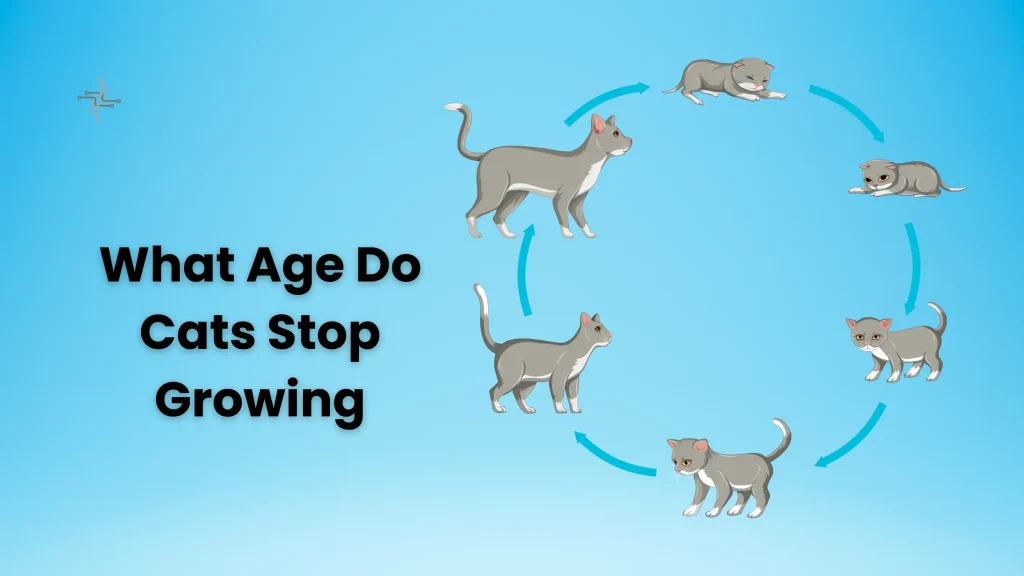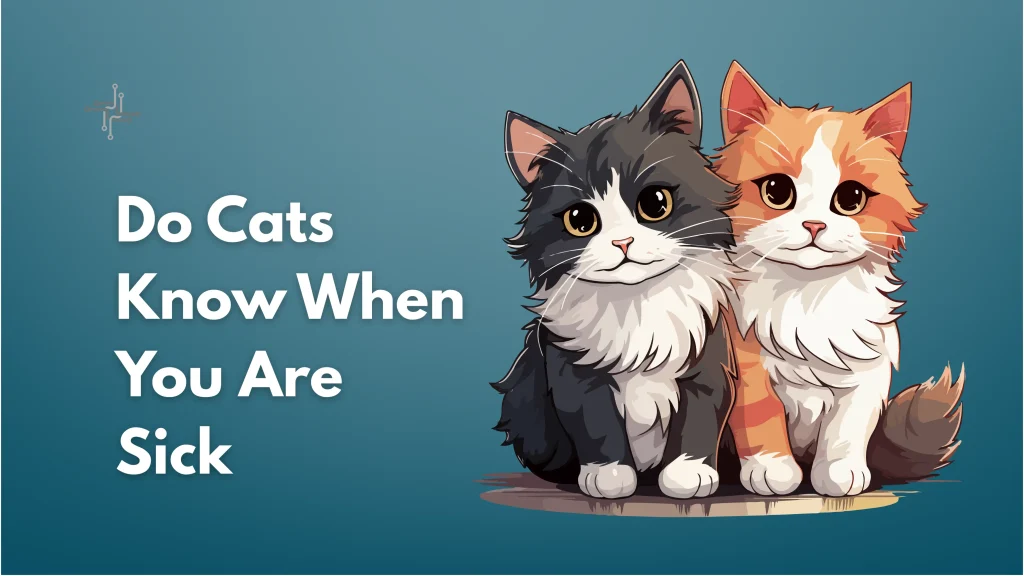Cats go through different growth stages as they age. The first stage is the kitten stage, which lasts from birth to about 6 months. During this time, they grow quickly and develop their basic skills. At around 8 weeks, they are ready to start exploring and eating solid food. From 6 months to 1 year, they enter adolescence, where their growth slows down, but they may still get taller or heavier.
Most cats stop growing at around 12 to 18 months. However, larger breeds like Maine Coons may take up to 3 to 4 years to fully mature. By this time, they reach their adult size and weight. While their physical growth slows, their muscles and bone structure may continue to develop until they are fully grown.
Table of Contents
Factors That Affect Cat Growth
Genetics and Breed Influence
Genetics play a major role in how a cat grows. Each breed has its own growth pattern and size. Larger breeds, like Maine Coons, grow slower and take longer to reach full maturity, sometimes up to 3 to 4 years. Smaller breeds, like Siamese or Munchkins, typically stop growing much earlier. Understanding the breed’s growth pattern helps predict when they will stop growing.
Diet and Nutrition
Proper nutrition is essential for a cat’s growth. A well-balanced diet, rich in protein, fats, and essential vitamins, ensures strong muscles and healthy development. Kittens, especially, need more calories and nutrients to fuel their rapid growth. Poor nutrition, such as an imbalance in essential nutrients, can stunt growth and lead to long-term health issues, including weak bones or poor coat condition.
Environment and Stress
A cat’s living environment affects its growth. Cats that live in calm, comfortable surroundings tend to grow at a normal pace. Stress from a noisy or unstable environment can affect a cat’s overall well-being, leading to slower growth or even health problems. A safe and secure home helps promote healthy physical and mental development.
Veterinary Care
Regular veterinary check-ups are key to a cat’s growth. Vet visits help monitor their health and growth progress. The vet can provide guidance on nutrition, vaccinations, and general care. Regular visits also help detect any growth issues early, ensuring that the cat is developing properly and addressing any health concerns before they become serious.
Growth Stages of Cats
Kitten Stage (0 to 6 Months)
The kitten stage is when cats grow the most rapidly. From birth, kittens rely on their mother’s milk until they are around 4 weeks old, after which they begin eating solid food. By 8 weeks, they are more active, curious, and starting to play. Their bones, muscles, and organs grow quickly, and they learn essential skills like using the litter box. At 6 months, they are nearly half their adult size.
Adolescent Stage (6 Months to 1 Year)
In this stage, cats continue to grow, but at a slower rate. They start to mature physically, and their playful energy may start to calm down. Around 6 to 9 months, many cats reach sexual maturity, though they are still considered adolescents. Their bones and muscles continue to develop, but their growth rate slows. By the end of the first year, most cats are close to their adult size but may still fill out a little more.
Young Adult Stage (1 to 3 Years)
After the first year, a cat is considered an adult. They are fully grown but may still gain weight or muscle, especially in larger breeds. By 18 months to 2 years, most cats have reached their final size, but their bodies continue to strengthen and fill out. Larger breeds may still grow slowly during this time.
Full Maturity (3 to 4 Years)
Larger breeds like Maine Coons may continue to grow and develop until they are 3 to 4 years old. At this stage, cats are fully mature physically, and their behavior also stabilizes. Their growth rate is very slow at this point, and they are considered fully grown both in size and in behavior.
When Do Cats Stop Growing
General Growth Timeline
Most cats stop growing between 12 to 18 months of age. During their first year, they grow quickly, especially in the kitten and adolescent stages. By their first birthday, many cats have reached their full height and most of their body size. However, some may continue to gain muscle and weight slowly after this period. Growth begins to slow around 9 months and usually stops completely by 18 months.
Breed-Specific Differences
Some cat breeds take longer to grow than others. Smaller breeds like Siamese or British Shorthairs usually stop growing around 12 months. Larger breeds, like Maine Coons or Ragdolls, may continue growing until they are 3 to 4 years old. These cats grow at a slower pace and need more time to fully develop. Knowing the breed helps understand how long growth may last and what to expect in terms of size and development.
Signs of a Fully Grown Cat
Physical Signs
A fully grown cat has reached its adult size and weight. Its legs, body, and head appear balanced and well-proportioned. The coat looks thicker and shinier compared to the kitten stage. Their teeth are all adult teeth, and their face shape becomes more defined. You may also notice less rapid weight gain, showing that growth has slowed or stopped.
Behavioral Signs
Adult cats are usually calmer and less hyper than kittens. They sleep more, play less often, and show more predictable habits. They may be more independent and prefer routine. Fully grown cats also show clear preferences in food, toys, and sleeping spots. If a cat shows stable behavior and no longer changes much in size, it’s a sign that they’ve finished growing.
How to Support Your Cat’s Growth
Feed a Balanced Diet
To support your cat’s growth, give them high-quality food made for their age. Kittens need more protein, fat, and calories than adult cats. Make sure the food has all the right vitamins and minerals. Fresh water should always be available. Avoid giving them human food, as it may upset their stomach or lack nutrients.
Visit the Vet Regularly
Regular vet check-ups help track your cat’s growth and health. The vet can check their weight, teeth, and overall development. Vaccinations and parasite control are also important during growth stages. If your cat isn’t growing properly, the vet can spot any problems early.
Create a Safe and Fun Environment
Cats grow better in a calm, stress-free home. Give them space to run, climb, and explore. Play with them daily to help them stay active. A happy, well-exercised cat tends to grow stronger and healthier both physically and mentally.
Common Growth Problems in Cats
Stunted Growth
Some cats may not grow as expected. This can happen due to poor nutrition, illness, or genetic issues. If a kitten doesn’t gain weight or grow taller over time, it might be a sign of stunted growth. Worms and infections can also affect how a cat grows. Early vet care and proper feeding help prevent this.
Obesity During Growth
Overfeeding a growing kitten can lead to extra weight. While they need more food, giving too much can cause obesity. A fat kitten might seem cute, but it can lead to health problems later. Balanced meals and regular play help keep their weight right as they grow.
Bone and Joint Problems
If a cat grows too fast or lacks important nutrients, their bones and joints might not develop well. This can lead to weak legs or limping. Regular vet visits and proper food can help catch and fix these issues early.
Conclusion
Cats grow fast in their first year. Most stop growing between 12 to 18 months. Some larger breeds may keep growing until 3 to 4 years old. Their growth depends on breed, food, health, and care.
Watch your cat’s size and behavior. Give them the right food and take them to the vet. A calm home also helps them grow well. When they stop growing, their size, habits, and energy become more steady. Knowing when your cat is fully grown helps you care for them better as they enter adult life.


